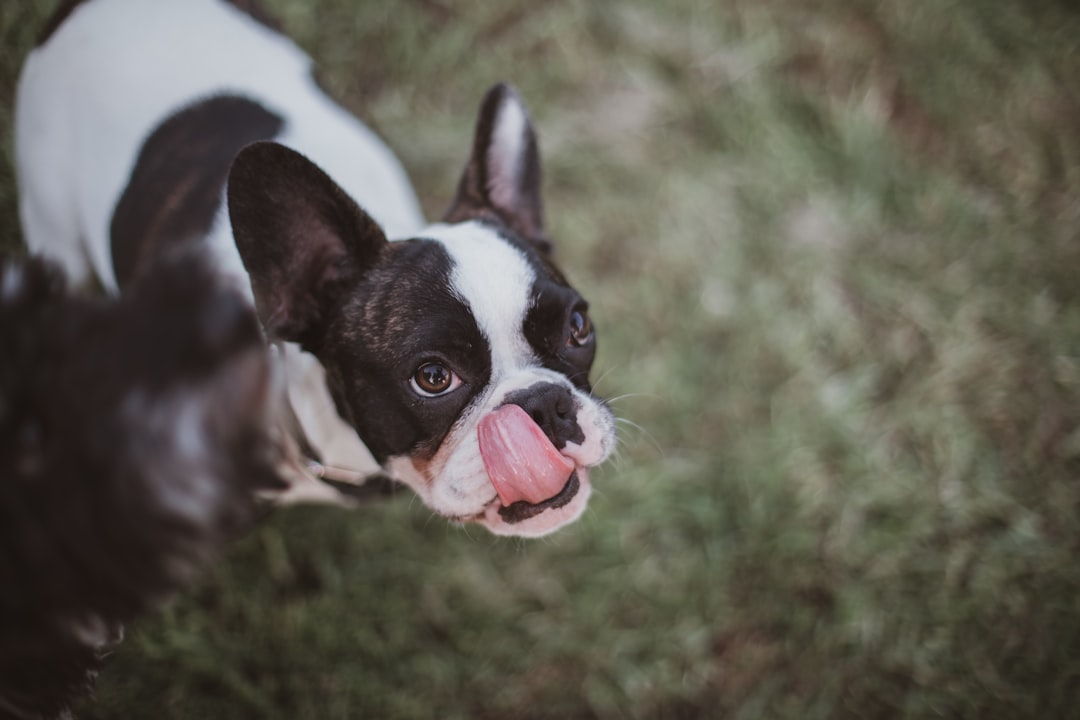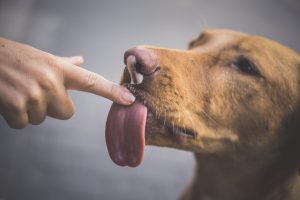The Science Behind Dog Licking: From Bonding to Behavioral Cues
An in-depth exploration of why dogs lick, including the natural and instinctive behavior, reasons for licking, addressing excessive licking, and understanding specific licking behaviors.
Overview of Dog Licking Behavior
Dogs licking is a multifaceted behavior that serves as a natural and instinctive way for them to interact with their environment and communicate with humans and other animals. One of the primary reasons for dog licking is grooming and cleanliness. Dogs lick themselves as a natural behavior to maintain hygiene, and they also use licking as a way to show affection and care for their human companions. For instance, a dog may lick its owner’s hand or face as a grooming behavior, which also serves as a form of bonding between the dog and its owner.
Another common reason for dog licking is communication and bonding. Licking allows dogs to express various emotions, such as love, empathy, and the desire for attention. For example, when a dog licks its owner’s face, it may be a way of showing affection and strengthening the bond between them. In addition to grooming and bonding, dogs may lick objects or people to explore their environment and interact with different stimuli, including the taste of salt and acidic chemicals in sweat.
It is crucial for dog owners to recognize the multifaceted nature of dog licking behavior, as it can be an indicator of underlying emotional or medical issues. By understanding the reasons behind dog licking and addressing excessive licking, both the well-being of the dogs and the satisfaction of their owners can be ensured. Therefore, being attentive to a dog’s licking behavior and responding appropriately can contribute to a harmonious and healthy relationship between dogs and their human companions.
 Reasons Why Dogs Lick
Reasons Why Dogs Lick
Dogs lick for a variety of reasons, many of which are natural and instinctive behaviors. One common reason for licking is grooming and cleanliness. Dogs use licking as a way to maintain hygiene, not only for themselves but also as a form of affection towards their fellow canine companions. This behavior also extends to their human counterparts, as dogs often express their affection through licking as well.
Licking also serves as a form of communication and bonding for dogs. It is a way for them to express their feelings of affection and strengthen their social bonds with other dogs and their human family members. This bonding behavior is an essential aspect of a dog’s social interactions and is a demonstration of their emotional connection with others.
Furthermore, dogs may lick to explore their environment and interact with different stimuli. For example, they may be interested in the taste of salt and acidic chemicals found in human sweat. This exploration through licking is a natural behavior that allows dogs to gather information about their surroundings and the individuals within it. Additionally, licking can also be a way for dogs to seek attention, show affection, or alleviate stress and anxiety. This multifaceted behavior highlights the various reasons why dogs engage in licking and emphasizes the importance of understanding the motivations behind this action.
Behavioral and Medical Causes of Excessive Licking
Excessive licking in dogs can be a complex behavior that stems from various factors, including both behavioral and medical causes. On the behavioral side, dogs may lick excessively due to boredom, anxiety, habit, seeking attention, or even hunger. For instance, a dog might develop a habit of excessive licking as a way to self-soothe when feeling anxious or stressed, and this behavior can become ingrained over time.
Moreover, from a medical perspective, allergies, skin conditions, infections, and obsessive-compulsive disorder (OCD) can also lead to excessive licking in dogs. For example, a dog with an underlying skin condition may engage in excessive licking to alleviate discomfort or irritation caused by the condition. Therefore, understanding the root cause of the excessive licking behavior is crucial in order to provide the appropriate intervention and care for the dog.
It is important for dog owners to be able to differentiate between the behavioral and medical causes of excessive licking to ensure their pet’s well-being. Seeking veterinary care is essential to rule out any underlying medical conditions and address them appropriately. Additionally, implementing strategies such as redirecting the dog’s attention, positive reinforcement training, and removing potential allergy sources can help mitigate excessive licking behavior. By being mindful of these causes and taking proactive steps, dog owners can create a supportive environment for their pets to thrive and lead a healthy, contented life.
 Addressing Excessive Licking Behavior
Addressing Excessive Licking Behavior
When it comes to addressing excessive licking behavior in dogs, there are several effective techniques that can be employed. For instance, redirecting the dog’s attention to more appropriate activities can help in reducing the urge to lick excessively. This can be achieved by engaging the dog in activities such as interactive play, puzzle toys, or obedience training, which not only divert their attention but also provide mental stimulation and a sense of fulfillment.
Positive reinforcement is another valuable tool in addressing excessive licking. When the dog refrains from excessive licking and engages in alternative, desirable behaviors, it’s important to offer praise, treats, or affection to reinforce this positive conduct. This helps the dog associate good behavior with rewards, encouraging them to repeat these favorable actions rather than resorting to excessive licking.
Moreover, it’s crucial to identify and eliminate potential allergy sources that could be triggering the excessive licking behavior in dogs. Common allergens such as certain foods, environmental factors, or grooming products can result in skin irritation, leading to excessive licking as a means of soothing the discomfort. By removing or minimizing exposure to these allergens, the underlying cause of the excessive licking can be effectively addressed.
In addition to these behavioral interventions, providing dogs with ample opportunities for physical exercise and mental stimulation is vital. Regular exercise not only helps in reducing stress and anxiety, which are common triggers for excessive licking, but it also promotes overall well-being and contentment in dogs. Interactive toys and activities that stimulate the dog’s mind can also serve as effective distractions from excessive licking, channeling their energy and focus into more positive outlets.
Lastly, seeking professional veterinary care is imperative in addressing excessive licking behavior, especially if there is a suspicion of an underlying medical condition. Through a thorough examination, a veterinarian can diagnose and treat any medical issues contributing to the excessive licking, ensuring the holistic well-being of the dog. By combining these strategies, dog owners can effectively address and curb excessive licking behavior, promoting a healthier and happier lifestyle for their furry companions.
Dog Licking Behavior and Human Interaction
When it comes to allowing dogs to lick human faces, it’s essential to consider the potential health risks associated with bacteria and parasites present in their mouth. While some dog owners may find it endearing, it’s crucial to understand the implications of this behavior and make an informed decision about whether to allow it. Furthermore, recognizing the signs that excessive licking may be linked to underlying emotional or medical issues is vital for the well-being of both the dog and the owner.
For example, if a dog suddenly starts licking a family member’s face excessively, it could be a sign of distress, discomfort, or an attempt to communicate a need for attention or relief from anxiety. By recognizing this behavior as potentially indicative of an issue, the owner can take proactive steps to address the underlying cause and ensure the dog’s well-being. Additionally, being able to distinguish between normal and excessive licking behaviors in dogs is crucial. While a certain level of licking is a natural behavior for dogs, excessive licking could signify an underlying problem that requires attention and intervention.
In summary, understanding the safety considerations of allowing dogs to lick human faces and being aware of the signs of excessive licking related to emotional or medical issues are essential aspects of responsible dog ownership. By being informed about these factors, dog owners can better ensure the health and happiness of their beloved pets.
Understanding Specific Dog Licking Behaviors
Understanding specific dog licking behaviors is essential for dog owners to interpret their pets’ actions accurately. For instance, when a dog stops mid-lick and lays its tongue on a person, it can signify various emotions and intentions. This behavior may indicate a moment of affection, where the dog pauses to express love and contentment towards the person. Alternatively, it could be a way for the dog to seek attention, conveying a desire for interaction and physical closeness with their owner.
Moreover, the act of a dog stopping mid-lick and laying its tongue on a person can also signal trust and relaxation. In this context, the dog may be demonstrating a sense of comfort and security in the person’s presence, showcasing a bond built on trust and mutual understanding. It’s important to recognize that dogs, like humans, communicate through their actions, and this behavior can serve as a form of non-verbal communication to convey their emotions and needs.
It’s crucial to emphasize the individuality of dogs and the contextual variability of their behaviors. A dog’s actions are influenced by a multitude of factors, including their personality, past experiences, and the current environment. For example, a dog may exhibit the same licking behavior for different reasons based on the specific situation or the people involved. Therefore, dog owners should observe their pet’s behavior holistically, taking into account the circumstances and the dog’s unique characteristics to accurately interpret their actions and respond appropriately.

